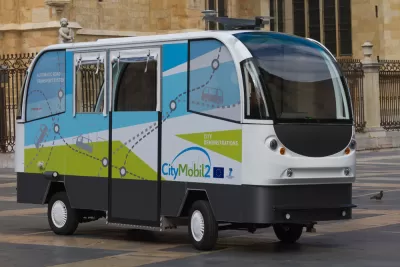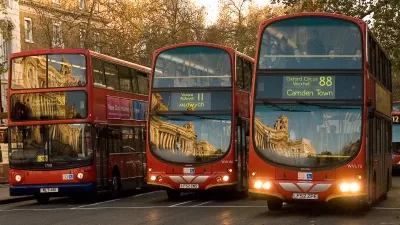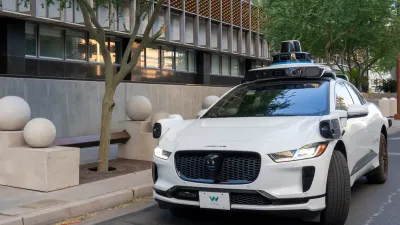It might be fun to imagine a a world filled with self-driving cars, reducing traffic and improving safety with one silver bullet. The more realistic short-term scenario, however, deploys low-speed, self-driving buses on private campuses.

According to an article by Nathaniel Mott, "while much of the focus has been on personal vehicles, public transit is more than likely going to be where we see [autonomous vehicle technology] adopted sooner."
To back that claim, Mott focuses on the self-driving bus project called Olli, interviewing project manager Jonathan Garrett. Olli is the work of Local Motors, a vehicle technology company located in Phoenix, Knoxville and National Harbor.
In the interview, Garrett explains why Local Motors chose a bus for the Olli project:
One of the reasons we’re tackling a low-speed, shared-use vehicle is because it’s easier to deploy. Being classified as a low-speed vehicle means you don’t have to meet certain regulatory requirements and you can operate much more easily on private campuses. So you’re going to see it in environments like that.
Garrett also talks about self-driving buses as a first-last mile solution for transit, the potential of self-driving technology in rural areas, the potential cybersecurity risks of autonomous vehicles, and more.
FULL STORY: Your First Autonomous Vehicle Experience Will Be in a Bus Like This

Manufactured Crisis: Losing the Nation’s Largest Source of Unsubsidized Affordable Housing
Manufactured housing communities have long been an affordable housing option for millions of people living in the U.S., but that affordability is disappearing rapidly. How did we get here?

Americans May Be Stuck — But Why?
Americans are moving a lot less than they once did, and that is a problem. While Yoni Applebaum, in his highly-publicized article Stuck, gets the reasons badly wrong, it's still important to ask: why are we moving so much less than before?

Using Old Oil and Gas Wells for Green Energy Storage
Penn State researchers have found that repurposing abandoned oil and gas wells for geothermal-assisted compressed-air energy storage can boost efficiency, reduce environmental risks, and support clean energy and job transitions.

Updating LA’s Tree Rules Could Bring More Shade to Underserved Neighborhoods
A new USC study finds that relaxing Los Angeles’ outdated tree planting guidelines could significantly expand urban tree canopy and reduce shade disparities in lower-income neighborhoods, though infrastructure investments are also needed.

California's Canal Solar Projects Aim to Conserve Resources and Expand Clean Energy
California’s Project Nexus has begun generating electricity from solar panels installed over irrigation canals, with researchers and state agencies exploring statewide expansion to conserve water and boost clean energy production.

HHS Staff Cuts Gut Energy Assistance Program
The full staff of a federal program that distributes heating and cooling assistance for low-income families was laid off, jeopardizing the program’s operations.
Urban Design for Planners 1: Software Tools
This six-course series explores essential urban design concepts using open source software and equips planners with the tools they need to participate fully in the urban design process.
Planning for Universal Design
Learn the tools for implementing Universal Design in planning regulations.
Heyer Gruel & Associates PA
City of Moreno Valley
Institute for Housing and Urban Development Studies (IHS)
City of Grandview
Harvard GSD Executive Education
Salt Lake City
NYU Wagner Graduate School of Public Service
City of Cambridge, Maryland





























